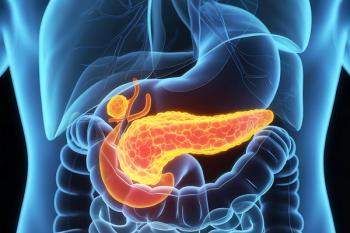
- The Column-07-08-2020
- Volume 16
- Issue 7
Determining Microplastic Accumulation Using Pyrolysis GC–MS
Researchers have developed an off‑line pyrolysis GC–MS method to study the accumulation of polystyrene microparticles in filter-feeding organisms.
Researchers have developed an off‑line pyrolysis gas chromatography–mass spectrometry (GC–MS) method to study the accumulation of polystyrene microparticles in filter-feeding organisms (1).
The deadly effects of ingesting microplastic particles on marine organisms have been demonstrated previously with otherwise healthy animals being found to contain an abundance of plastic particles within their digestive tracts leading to an untimely death.
In terms of susceptibility to this issue, filter‑feeding organisms are particularly exposed because of their feeding mechanisms. The importance of shellfish as a food resource to many cultures and communities highlights the issue of this susceptibility (2), and potentially constitutes another source of microplastics which could affect human health, especially when combined with other sources such as household fibrous particles.
Mussels have been involved in many laboratory studies on microplastic particles, however, quantitation of microparticles in mussels is a difficult task, often being performed by visual inspection or, in the case of synthetic polymers, with simple physical tools or advanced spectroscopic methods.
Thermal methods and analytical pyrolysis off-line and on-line to GC–MS has been used to identify polymers in numerous environmental matrices, and researchers were keen to use a similar methodology for quantifying plastic polymers within mussels. The study focused on polystyrene because it has been largely used as a reference plastic in bioaccumulation experiments and constitutes one of “the big six” plastics in environmental matrices.
Marine mussels were subjected to short term exposure to polystyrene microspheres (PS-MP), and the accumulation of PS-MPs was assessed in the digestive glands and gills, along with an evaluation of a sensitive biomarker used to determine the general health of mussels.
The method successfully quantified the mass of PS-MPs taken up by the mussels in the laboratory experiment, and provided information on the effect of particle size, exposure level, and tissue type on the bioaccumulation of polystyrene particles in terms of mass concentrations.
While the methodology was a success, researchers also highlighted some experimental factors which require consideration when using an analytical pyrolysis methodology. In particular, the detection of styrene oligomers could potentially be hampered by some experimental factors which the pyrolysis product yields are dependent on, as well as affecting calibration protocols based on styrene monomers, and causing matrix interferences that limit the lower range of detection of polystyrene microplastics. These are common shortcomings in both off-line and on-line pyrolysis but do require future studies.
Reference
- D. Fabbri et al., J. Anal. Appl. Pyrolysis 149, 1–7 (2020).
- Y. Cho et al., Environ. Pollut. 245, 1107–1116 (2019).
Articles in this issue
over 5 years ago
ChromSoc Announce ‘Martin’ & ‘Jubilee’ Medal Winnersover 5 years ago
Vol 16 No 7 The Column July 2020 North American PDFover 5 years ago
Vol 16 No 7 The Column July 2020 Europe and Asia PDFover 5 years ago
Detecting Biomarkers in Breath using GC–MSover 5 years ago
The LCGC Blog: Last Dance, for a While—Time to Share the Wealthover 5 years ago
2D–LC Characterizes Synthetic Oligonucleotidesover 5 years ago
Chromatographic Innovations for Cell Therapiesover 5 years ago
Understanding Microplastic LeachingNewsletter
Join the global community of analytical scientists who trust LCGC for insights on the latest techniques, trends, and expert solutions in chromatography.





